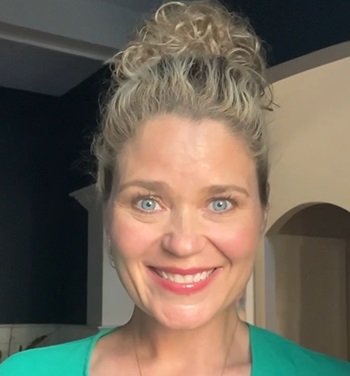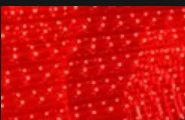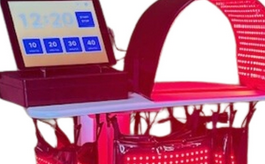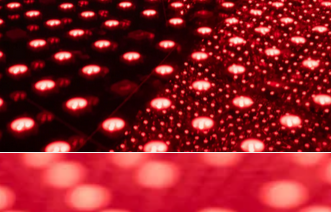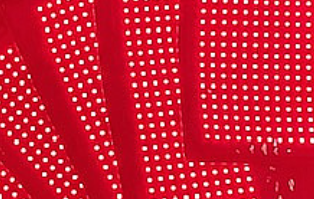Ask for Sue Open 8am-8pm 1-888-547-5296 |
DiscountRedLights.com.
... as I had paid too much and was misinformed for my first led light units...
|
Ask for Brian Open 8am-8pm 1-888-547-5296 |
### Understanding Red Light Therapy: Absorption, Dosage, and Effectiveness. DON'T LET THEM RIP YOU.
When red light interacts with an object, including human skin, it can be absorbed, reflected, or transmitted. The combined energy of these interactions always equals 100% of the total emitted energy. If a person lying in a red light therapy bed were to absorb all of the radiation, they would be considered a "blackbody" in physics. You remember Prof. Albert Einstein discussing the Black Holes?
### Understanding Bed Power: How Fast Should Results Appear?
If your red light bed has a low irradiance, it could take **months** to see results. However, beds closer to **65 mW/cm²** (or near that level) should deliver noticeable changes within weeks. Choosing a bed with inadequate power means wasting time and money.
#### The Fundamental Equation:
**t + α + ρ = 1**
Where:
- **t (Transmissivity)** – The fraction of light that passes through the body.
- **α (Absorptivity)** – The amount of light energy absorbed by the body.
- **ρ (Reflectivity)** – The portion of light that bounces off the surface.
**The Debate Over High-Power Red Light Beds**
The main argument against the latest red light beds is that if the intensity is too high, much of the light is reflected rather than absorbed, reducing its effectiveness. There’s ongoing debate about the newest model on the market—one that’s five times more powerful than any bed I’ve tested. Some believe this increased strength leads to better results, while others argue it pushes beyond the optimal absorption range. Before investing, I encourage people to consider whether they need a **slow burn** or a **fast burn** red light bed.
### Measuring Irradiance: Avoiding False Information
**Irradiance (mW/cm²) and Dosage (J/cm²) are key metrics.** If you don’t know the true irradiance of your device, you can’t accurately calculate dosage. Many clinics have been misled about their equipment’s power levels. I own precise meters that measure real red light output—not outdated solar panel meters that misrepresent readings. If you need help determining the actual power of your bed, I have the data for most brands and can provide proof through videos if needed.
### Understanding Red Light Bed Power Levels
Beds vary significantly in power output:
- **15 mW/cm²:** Low-power beds—require longer exposure times.
- **25 mW/cm²:** Mid-range beds—moderate effectiveness.
- **65 mW/cm²:** High-power beds—optimal results in shorter sessions.
If you were misled about your bed’s capabilities, I can help you challenge clinics and potentially recover lost costs from ineffective treatments.
### The Right Dose Matters
Therapeutic effects of red light depend on finding the optimal wavelength and intensity. Too little energy results in no noticeable effects, while too much can actually negate the benefits. The key is to remain within the **therapeutic window**—the range in which red light effectively interacts with cells without causing damage or overstimulation.
Many people unknowingly exceed this window, either by using the wrong irradiance or staying in the bed too long. If you’re cranking up the voltage too high or overextending session times, you might be doing more harm than good. I can calculate the correct exposure time for any red light bed by analyzing its **true irradiance**—both at the canopy level and the lying area. If your clients aren’t seeing results or stop returning after a few sessions, chances are you’re missing the mark.
### Distance & Time: Optimizing Sessions for Maximum Effect
Even with the best diodes and intensity, improper positioning can ruin results. If the light source is too far away, you're mostly feeling heat, not absorbing therapeutic wavelengths. Results happen when the body **absorbs enough electrons to reach critical mass** - that’s when healing or other desired effects take place.
**Overexposure is a common mistake.** Once cells reach their saturation point, excess exposure won’t enhance benefits - in fact, it can reverse them. Many clients unknowingly overdo their sessions, leading to diminishing returns. This is why many pay for a few treatments and never return. If you want to ensure clients get results and keep coming back, understanding the correct exposure duration is crucial.
### Heat Efficiency vs. Latent Heat: Are You Getting Real Therapy?
High-performance red light beds generate deep-penetrating heat (**deep lipolysis**) rather than surface heat. **Beds that simply warm your skin aren’t true red light therapy devices.** The best-performing beds create an internal warmth that can feel almost uncomfortably intense, whereas low-quality beds rely on latent heat and can give misleading impressions of effectiveness.
A simple test: If you still feel comfortable after 10 minutes, the bed may not be strong enough. The best feedback I receive comes from beds that feel **borderline uncomfortable** - this means they’re delivering the right energy intensity.
### Fast Burn vs. Slow Burn Sessions
- **Slow Burn Beds** (e.g., LightStim) require **30+ minutes** to deliver noticeable results.
- **Fast Burn Beds** (e.g., Ovation) reach effective irradiance levels in shorter periods. However, because they push the body into **cardiac drift** around the 30-minute mark, overexposure is a real risk.
If a technician understands their client's tolerance, they can **adjust session times** accordingly. I can help determine whether a client needs a **fast burn** or **slow burn** session based on their body type and sensitivity to high-intensity red light.
### Best Bed Types for Different Needs
- **Inflammation Relief:** Look for a bed that maximizes deep light absorption rather than just producing surface heat.
- **Scar Reduction:** The ideal penetration depth is **1/32 inch**—anything beyond that is excessive.
- **Muscle Recovery:** Beds with at least **30 mW/cm²** are most effective.
- **Blood Circulation:** Heat-based therapy plays a more significant role than light exposure here.
- **Joint Pain Relief:** **10 mW/cm² is insufficient**—users report significantly better results with **68 mW/cm²** beds.
### The “Rosy Flush” Effect
The thickness of a bed’s protective cover influences how much red light penetrates the skin. **Thinner covers (less than 1/8 inch) allow better light absorption and produce a “rosy flush” effect**—a temporary reddening of the skin that lasts around **two hours** after treatment. If you’re not experiencing this, your bed may not be delivering optimal exposure. Call me for advice on selecting a bed with the proper cover thickness.
### The Ideal Session Length
Most people **only need 8 to 10 minutes** for effective treatment. Many are doing **20 to 30-minute sessions** without realizing the irradiation happens within the first **8 to 10 minutes** - anything beyond that is wasted time.
- **80% of people need just 8–10 minutes.**
- **20% may require up to 15 minutes.**
- **Only 5% benefit from 20-minute sessions.**
If you’ve been doing 20-minute sessions and not seeing results, chances are **you should have stopped at 10 minutes.** Call me, and I’ll explain why—this one insight could completely change your approach to red light therapy.
- **80% of people need just 8–10 minutes.**
- **20% may require up to 15 minutes.**
- **Only 5% benefit from 20-minute sessions.**
If you’ve been doing 20-minute sessions and not seeing results, chances are **you should have stopped at 10 minutes.** Call me, and I’ll explain why—this one insight could completely change your approach to red light therapy.
-----------------------------------------
If you’re unsure whether you have the right bed, using the right settings, or delivering effective results, give me a call. I can help ensure that you or your clients **get the results you’re paying for** - without wasted time or money. I cannot emphasize this enough...
-----------------------------------------
### Last But Not The Least: Bed Weight & Portability - Practical Considerations
Newer red light beds are significantly lighter than older models, which often weighed **800 lbs or more**. Many modern units weigh closer to **175 lbs**, making them much easier to transport. If space constraints are a concern, knowing which models fit through a **standard 32-inch doorway** is crucial. Call me, and I can guide you to the right choice.
Complaints and concerns about red light beds, pads and pods
IMPORTANT: PLEASE READ THIS PAGE BEFORE CALLING ME.
For details, visit my Red Light Complaints Page HERE
What's NEW?
LATEST CHANGES IN RED LIGHT BEDS AND PADS
Prices: Prices have dropped – while advertised prices remain the same, costs have decreased.
Design: Zero gravity-shaped designs. Perfect for those who prefer neither flat nor concave styles.
Shape: New designs – top canopies are now positioned closer to the body.
Covers: 1/32-inch plastic covers. 1/8-inch covers have become less common.
Machine weight: Between 100 and 200 lbs – no more bulky 500 to 800 lb red light beds.
EMF: Lower EMF – now compatible with standard 110V outlets, eliminating the need for 20 or 30 amp connections.
Source of heat: High-heat circuit boards are mostly a thing of the past. Users feel relaxed due to circuit board heat, not the red light itself.
Quietness: Loud fans are no longer needed due to low-heat circuit boards.
Smell (off-gassing): Off-gassing has mostly been addressed. Clinics no longer smell like before.
Vibration plate massaging: Frequency massages are often built-in. The post-treatment process thus no longer requires whole-body vibration sessions.
NOTICE FOR THE CONSUMER: CLASS ACTION
GET A REFUND FOR A LIGHT UNIT (BED/POD/PAD) THAT MISREPRESENTED ITS INTENSITY CLAIMS.
Companies are overstating diode output by more than five times the actual level. They measure under the plastic cover or use uncalibrated methods, such as solar power meters instead of red light meters. "The FTC Act prohibits unfair or deceptive advertising in any medium. That is, advertising must tell the truth and not mislead consumers."
If your red light bed fails to deliver the advertised intensity, federal law (and often state laws) entitles you to a refund, financial compensation, or a return.
Ask for Sue Open 8am-8pm 1-888-547-5296 |
DiscountRedLights.com.
... as I had paid too much and was misinformed for my first led light units...
|
Ask for Brian Open 8am-8pm 1-888-547-5296 |
